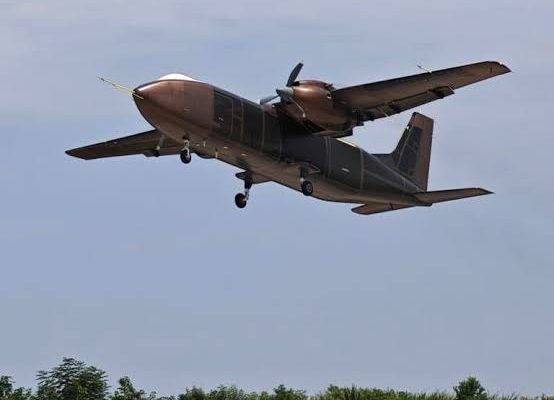China has taken significant strides in its burgeoning low-altitude economy, marked by the test flight of its largest cargo drone to date and the introduction of a new helicopter taxi route.
Over the weekend, engineers successfully conducted a test flight of China’s largest cargo drone, which was developed by the state-funded Sichuan Tengden Sci-tech Innovation Co. The twin-engine drone, with a payload capacity of 2 metric tons, took off in southwestern Sichuan province for its inaugural flight, lasting approximately 20 minutes, according to state media reports.
This drone boasts a wingspan of 16.1 meters (52.8 feet) and a height of 4.6 meters (15 feet), making it slightly larger than the globally popular Cessna 172 light aircraft. These developments highlight China’s commitment to revolutionizing aerial logistics and passenger transport.
As the world’s leading drone manufacturer, China is pushing the envelope with drones capable of carrying increasingly larger payloads. Simultaneously, transport companies are gearing up to launch both manned and unmanned air taxi services. These advancements come as China relaxes airspace restrictions and provides incentives to bolster its low-altitude economy. The country’s aviation regulator predicts that this sector could expand fourfold by 2030, becoming a 2-trillion-yuan ($279-billion) industry.
The successful Tengden drone flight follows the maiden flight in June of another significant cargo drone developed by the state-owned Aviation Industry Corp of China (AVIC). The AVIC’s HH-100 drone, which has a payload capacity of 700 kg (1,543 pounds) and a flight radius of 520 kilometers, represents a major advancement in drone technology. Looking ahead, AVIC plans to test its largest cargo drone, the TP2000, next year. This drone is expected to carry up to 2 tons of cargo and fly four times farther than the HH-100.
China has already begun to commercialize drone deliveries. In May, Phoenix Wings, a subsidiary of the delivery giant SF Express, commenced the delivery of fresh fruit from Hainan province to Guangdong using Fengzhou-90 drones developed by SF, a unit of S.F. Holding.
According to industry insiders, cargo drones offer the potential for faster delivery times and lower transportation costs, especially to areas lacking conventional aviation infrastructure, such as dense urban environments. These drones could also be adapted for passenger transport in the future.
In a significant development, aviation authorities in April issued a production certificate to EHang Holdings, a UAV maker based in Guangzhou, for its passenger-carrying drone. This marks the first time China has granted such certification for an autonomous passenger drone.
The government, in its report this year, identified the low-altitude economy as a new growth engine, recognizing vertical mobility as a “new productive force” in both passenger and cargo transportation.
Additionally, on Saturday, a manned commercial passenger helicopter embarked on its first journey from Kunshun, Jiangsu province, to Shanghai Pudong Airport. Operated by Shanghai NewSky Heli Co, this service aims to reduce travel time between the two cities to just 20 minutes, down from several hours. The company anticipates up to 30,000 passengers per year to utilize this service, which officially launches on August 18, with one-way fares reaching up to 1,800 yuan.
Shanghai is also planning to extend low-altitude routes to cover other cities within the Yangtze River delta, further cementing its role as a leader in low-altitude economic




